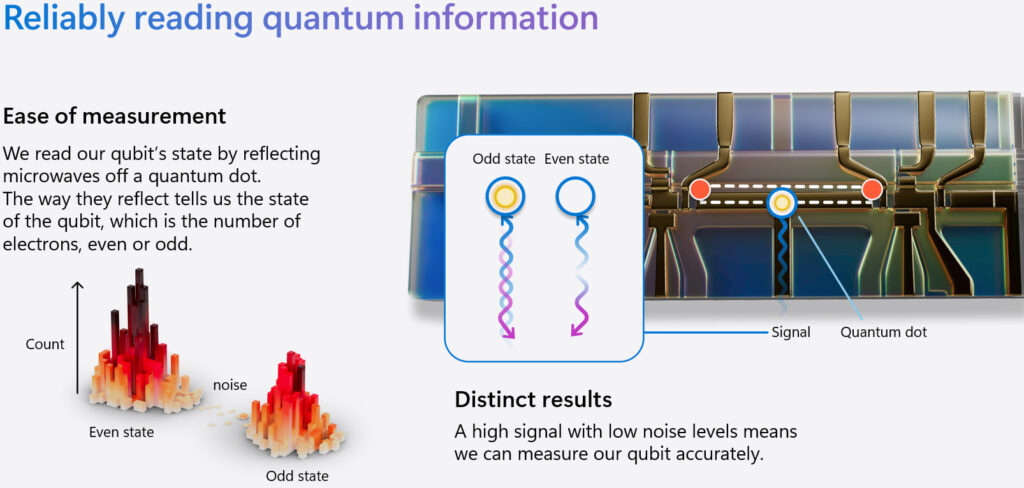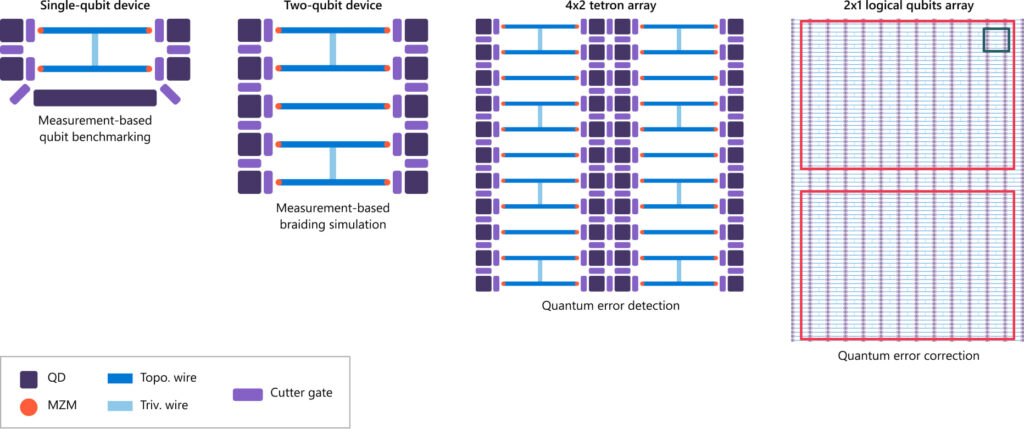
Microsoft has announced Majorana 1, the world’s first quantum processing unit (QPU) built with topological qubits, marking a major leap toward fault-tolerant quantum computing.
The breakthrough, supported by research published in Nature, leverages a novel material called a topoconductor, allowing for more stable, scalable, and error-resistant quantum systems.
The announcement highlights Microsoft’s progress toward a practical quantum computer. Unlike traditional quantum systems that struggle with error correction and scalability, Majorana 1 is built on topological superconducting nanowires, which host Majorana Zero Modes (MZMs) — exotic quasiparticles that protect quantum information from external noise.
The development follows Microsoft’s earlier breakthrough: the creation of a topoconductor, a material engineered to exhibit topological superconductivity — a state of matter that previously existed only in theory. Microsoft’s research team combined indium arsenide (a semiconductor) with aluminum (a superconductor) to fabricate gate-defined devices that, when cooled to near absolute zero, form nanowires with MZMs at their ends. These MZMs provide an intrinsic layer of protection against quantum decoherence, a fundamental challenge in quantum computing.
Roadmap to fault-tolerant quantum computing
Traditional superconducting qubits require complex error correction schemes that demand massive physical qubit overhead. Microsoft’s approach is different — topological qubits inherently shield themselves from certain types of errors, making them smaller, faster, and easier to scale. These qubits store quantum information based on parity, meaning whether the number of electrons in a nanowire is even or odd.
However, reading such protected quantum information presents a challenge. Microsoft’s solution involves coupling nanowires to quantum dots — tiny semiconductor devices that store charge. By using microwave reflectometry, researchers can detect how charge retention changes depending on the nanowire’s parity, allowing for a highly reliable, single-shot readout method. Initial tests achieved an error probability of just 1%, with paths identified for further improvement.

Microsoft
With Majorana 1, Microsoft is laying out a clear roadmap toward large-scale, fault-tolerant quantum computation. The next step involves developing a scalable tetron-based architecture, where each qubit is formed by two parallel topological wires connected by a trivial superconducting bridge. Microsoft has already fabricated eight topological qubits on a chip designed to hold a million.
The company is also working on a 4×2 tetron array, which will be used to demonstrate quantum error detection on two logical qubits — an essential step toward full quantum error correction (QEC). Microsoft’s measurement-based approach simplifies QEC significantly, allowing error correction through digital pulses rather than complex analog controls, making large-scale quantum systems more practical.

Microsoft
Partnership with DARPA
Microsoft’s quantum advancements have earned recognition from the Defense Advanced Research Projects Agency (DARPA). The agency selected Microsoft as one of two companies to advance to the final phase of its Underexplored Systems for Utility-Scale Quantum Computing (US2QC) program, a part of DARPA’s larger Quantum Benchmarking Initiative.
This selection follows an extensive review of Microsoft’s quantum architecture and engineering plans. As a result, DARPA and Microsoft have formalized an agreement to build a fault-tolerant prototype (FTP) based on topological qubits within years — not decades. This partnership validates Microsoft’s quantum roadmap and accelerates its goal of building a scalable, utility-scale quantum computer.
Majorana 1’s place in the quantum chips space
Microsoft’s announcement comes just months after Google introduced Willow, a 105-qubit superconducting quantum processor that demonstrated exponential error reduction in quantum computations. While Willow set records in random circuit sampling (RCS), its impact on practical applications remains limited. RCS benchmarks, while useful for demonstrating computational supremacy, have no direct real-world application.
In contrast, Microsoft’s Majorana 1 is focused on fault tolerance and scalability from the outset. The topological approach drastically reduces qubit overhead for error correction, whereas Google’s Willow and other Noisy Intermediate-Scale Quantum (NISQ) systems still struggle with stability and scalability.
Both developments highlight significant progress, but breaking encryption or solving real-world quantum problems remains years away. While Willow showcases advancements in quantum error correction, Majorana 1 represents a shift toward a hardware-protected architecture — one that could make practical quantum computing a reality sooner than previously expected.







Leave a Reply